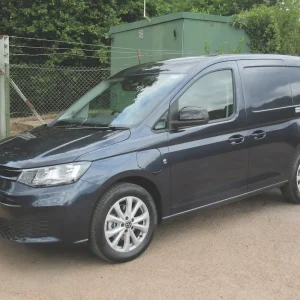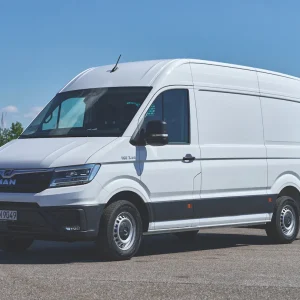It will be a timely launch for the French manufacturer, which has endured months of flagging sales in the UK and seen its place in the pecking order usurped by some key rivals. It may also have galled the brand to witness all the attention lavished on the introduction of the Mercedes Citan (see ‘The What Van? Road Test’, page 20), a light van based on the Kangoo and built alongside it at Renault’s dedicated Kangoo factory, MCA Maubeuge in Lille, France. The Citan was one of the star attractions at the CV Show in April, an event that Renault did not even attend.
The new Kangoo line-up consists of two wheelbases: Kangoo van (ML) and Kangoo Maxi (LL), which is available as a two-seat panel van or five-seat passenger-carrying vehicle. Renault will not be bringing the smaller Compact model back to the UK, having withdrawn this derivative in February 2012 due to low demand. Nor will the UK be getting petrol models – on offer will be the 1.5-litre dCi diesel drivetrain with power outputs of 75, 90 and 110hp, as well as the electric Kangoo ZE.
Visually Renault has toughened up the latest model, removing some of its predecessor’s soft, feminine curves to give it a more robust, muscular appearance. The front end of the van includes Renault’s new styling identity with a more prominent logo set against a black grille. Tapered almond- shaped headlights are also new and the large, rounded front bumper juts forward of the bonnet to give a more aggressive look.
Renault has added distinctive design cues to differentiate the conventional and electric models. Diesel versions feature a textured, black front bumper designed to withstand the scrapes and scratches a workhorse van is likely to encounter on a daily basis. The rear light extensions are also black.
The plug-in ZE, which Renault reckons has a range of 80 to 105 miles under working conditions, gets a blue finish to the chrome strips either side of the logo as well as to the badge itself. The rear light extensions are also blue-tinted as is the chrome finish inside the rear light clusters.
Taking its lead from the electric Zoe passenger car, the Kangoo ZE’s battery charging plug is located behind the logo in the front grille. Renault says the ZE can be recharged from a wall box in six to nine hours.
Renault has also reworked the interiors of both the ZE and the standard van. The cabin now gets a new, glossy, black centre console housing the air-conditioning and radio controls that is similar to that found in the new Clio, Captur and Zoe cars. The connected Renault R-Link multimedia system is offered as an option for £810. It allows remote control of all multimedia functions (navigation, radio, Bluetooth, iPods, USBs). The instrument bezels, meanwhile, are black with a white surround while the dials on the ZE, including econometer, battery-charge indicator and speedometer, come with a blue hue.
Testing times
The Kangoo is offered in three trim levels – Debut, Core and Sport – with payloads across the van and Maxi range going from 650kg up to 800kg and load volumes varying from 3.0m3 to 4.6m3. With its battery centrally located beneath the floor, the ZE boasts a 650kg payload and a load volume of 3.0m3-4.0m3.
We tested the 90hp 1.5-litre standard van (the best-selling bodystyle) in Sport trim, which also incorporated the Energy package with stop/start and a braking energy-recovery system to improve fuel consumption and environmental performance. Renault officially puts its vital statistics at 65.7mpg on the combined cycle alongside CO2 emissions of 112g/km, which the brand says ranks as the best- in-class together with the Kangoo-spawned Citan.
With a partial load in the back the engine is provides just enough zip: maximum torque of 200Nm kicks in at 1750rpm. Renault is also offering the 110hp version of the 1.5-litre dCi on the Kangoo, having introduced the engine on the Megane passenger car, but unless you’re regularly undertaking long journeys with heavy loads on board we reckon the 90hp unit would provide sufficient versatility for both urban and longer-distance assignments.
One quibble may be that the 90hp van, like the 75hp one, comes with a five-speed manual gearbox while the more powerful model gets a sixth gear, which helps on motorways. However, we found the five-speed version to be slick and snappy and perfectly adequate on a route consisting of winding open roads, roundabouts and town streets. Handling is impressively sure- footed and the ride supportive and firm; the Kangoo appears to have benefitted in this respect from its partnership with the Mercedes Citan, and the work of the German firm’s engineers.
The stop/start system works efficiently, cutting off the power seamlessly when you come to a halt at traffic lights and starting
up again without any fuss when you depress the clutch. Together with an Eco button to moderate revs and a discreet gear-shift indicator on the instrument cluster, an extra £250 for an Energy version seems like a reasonable outlay, though it’s a shame it’s not standard.
The van we drove also came with ESC, which includes Grip Xtend to improve traction on dry, icy or wet roads via an ASR ant-skid function when in ‘Road’ mode, while in ‘Loose Ground’ mode it improves grip on rougher surfaces by controlling front wheel braking. ESC is offered as a £350 option on Core and Sport models, but is not available on 
the entry-level Debut. It is disappointing that such a groundbreaking safety feature is not included as standard but Renault insists that economic considerations dictate the strategy and points out that key rivals such as Peugeot and Citroen operate similar policies.
The driving position is comfortable, although the steering wheel is height-adjustable only, and there is adequate storage, including a generous bin between the seats. The interior is pleasant and modern despite the plastic on the dashboard looking rather too hard and shiny, and the shovel handle-style parking brake might take a bit of getting used to.
The load bay contains six tie-down points and is accessed by twin asymmetrical rear doors and sliding doors on both sides, although the offside one comes as an option for £230 excluding VAT. We also got cruise control and parking sensors for an extra £200 each. But for £14,800 (ex. VAT) the Kangoo Sport is well-specced overall and includes features such as 15-inch alloy wheels.
Competitively priced and improved, the new Kangoo should position Renault back towards centre stage.
Verdict
An impressive and versatile package that should re-establish the Kangoo in the leading pack of the sector.





